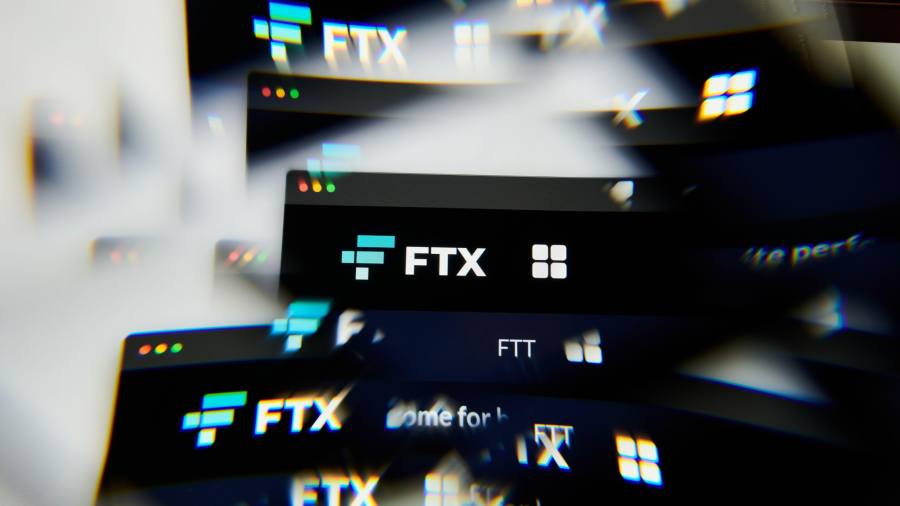
The collapse of Sam Bankman-Fried’s $32bn cryptocurrency exchange captivated and stunned crypto markets this week, but at the centre of the crisis was a far lesser known, but risky entity: Alameda Research.
Sam Bankman-Fried’s digital asset trading shop opened in 2017, but within two years of its founding was dealing about $600mn to $1bn a day. Much of its funding was based on borrowing, often using other crypto tokens as collateral to make highly leveraged bets, according to industry participants.
The firm, run by a small cadre of executives and ultimately controlled by Bankman-Fried, had close ties to FTX, a sprawling crypto trading venue that allowed customers to bet on the price of digital tokens such as bitcoin using complex derivatives. Bankman-Fried founded FTX about a year and a half after Alameda. This week Alameda owed the exchange $10bn, according to people familiar with the matter.
“The tipping point isn’t FTX, it’s Alameda and the credit risk they were taking,” said Rosario Ingargiola, founder and chief executive of Bosonic, a crypto settlement service.

Alameda ultimately sparked the blaze that finally engulfed FTX.
A report by crypto publication CoinDesk on November 2 alleging that $5.8bn of the $14.6bn of the assets on Alameda’s balance sheet were coins issued by FTX, known as FTT, ignited deep concerns about the relationship between the two nominally separate entities. The report also said a large chunk of Alameda’s FTT had been used as collateral for loans to an unknown party.
“This alone should raise alarms, but the bigger question is: who had accepted billions of dollars worth of FTT as collateral?” asked Clara Medalie, an analyst at Kaiko, a crypto market research provider.
The story deepened market suspicions over the health of Alameda and whether it was sitting on heavy market losses sustained in the crypto crisis of the spring. The balance sheet snapshot included the period when many big crypto names went bust. Bankruptcy filings for one of them, Voyager Digital, revealed Alameda owed the lender $376mn.
In an initial sign of the liquidity issues facing Bankman-Fried’s empire, Alameda was valuing its FTT holdings at nearly 200 per cent of FTT’s prevailing market capitalisation of $3.1bn, according to the report.
Caroline Ellison, chief executive of Alameda, said on Sunday the balance sheet reflected only one of the firm’s corporate entities and the business had more than $10bn of assets that were not reflected in the numbers.
But the market was not convinced. Just over an hour later on Sunday, Changpeng Zhao, chief executive of rival exchange Binance, said he would dump its FTT tokens, worth at least $580mn, in response to “recent revelations” and cited the example of luna, the cryptocurrency that collapsed overnight in May, creating a bout of severe turbulence in the market.
FTX customers also rushed for the exits. The exchange faced a record roughly $5bn of withdrawals on Sunday and Bankman-Fried admitted this week that it had only $4bn in easily tradeable US dollar assets to cover them. Bankman-Fried put the misjudgement of his customers’ leverage to a “poor internal labelling of bank-related accounts”.
On Monday, as FTX was facing heaving withdrawals, Alameda was attempting to sell the most liquid assets to hand. A snapshot of Alameda’s balance sheet, seen by the Financial Times, showed it was looking to liquidate shares it held in retail broker Robinhood, crypto tokens, and to call in a loan to FTX’s EU arm. However, only $1.8bn was readily available despite its large liabilities to FTX.
By Tuesday customers reported having difficulty withdrawing their funds, which only accelerated market fears. “FTX is neither a trading firm nor a lender, so theoretically, they should at all times have access to the equivalent of 100 per cent of their client’s funds,” Medalie said.
Jean-Marie Mognetti, chief executive of asset manager CoinShares, which has $30.3mn exposure to FTX, said Bankman-Fried’s trading venue is “not an exchange, it’s much wider”.
“Everything is integrated in this complicated way which is creating this black box,” he added.
At the same time holders of FTT tokens were also selling heavily, worsening Alameda’s position. On Tuesday there was a record 309mn of FTT traded, the equivalent of more than $1bn, according to data from Kaiko, which traders attributed to FTX selling other assets in an attempt to defend its coin’s price.
But FTT’s price still slumped 80 per cent over Monday and Tuesday. The loans secured against FTT were underwater, creating a vicious cycle that Bankman-Fried struggled to break.
Searching for a lifeline, he turned to his arch rival — Zhao at Binance — who agreed on Tuesday to buy the exchange. FTX had “asked for our help”, Zhao wrote on Twitter, adding: “There is a significant liquidity crunch.”
But after less than 48 hours of due diligence, on Wednesday Binance walked away. Zhao cited concerns over FTX’s business practices and investigations by regulators.

With his best bet gone, Bankman-Fried scrambled for an alternative, asking investors for up to $8bn to plug a hole in FTX’s balance sheet. He turned to crypto exchanges OKX, stablecoin operator Tether and Justin Sun, founder of crypto token Tron, for a cash injection — but none materialised.
Investors that had been so ready to back him earlier in the year, such as Sequoia Capital and SoftBank, wrote down the investments to zero.
Bankman-Fried took to Twitter on Thursday to apologise for the crisis engulfing his crypto empire. “I’m sorry. That’s the biggest thing. I fucked up, and should have done better,” he said, adding that Alameda would be closing. In a last-ditch effort, he tried to reassure the market that FTX was solvent but not liquid and that users of its US arm were “fine”.
It was too late. Within 24 hours FTX and Alameda had filed for bankruptcy and Zhao was predicting the impact would thrust the industry into a crisis resembling the crash of 2008. US regulators are looking at FTX’s lending products and the management of customer funds, said a person familiar with the matter. For many the cause was straightforward.
“It’s all rooted in a lack of transparency and conflicts of interest,” said Anish Puaar, head of European equity market structure at market maker Optiver. “You’ll never have a major exchange like the London Stock Exchange or Deutsche Börse so closely affiliated with a market maker.”